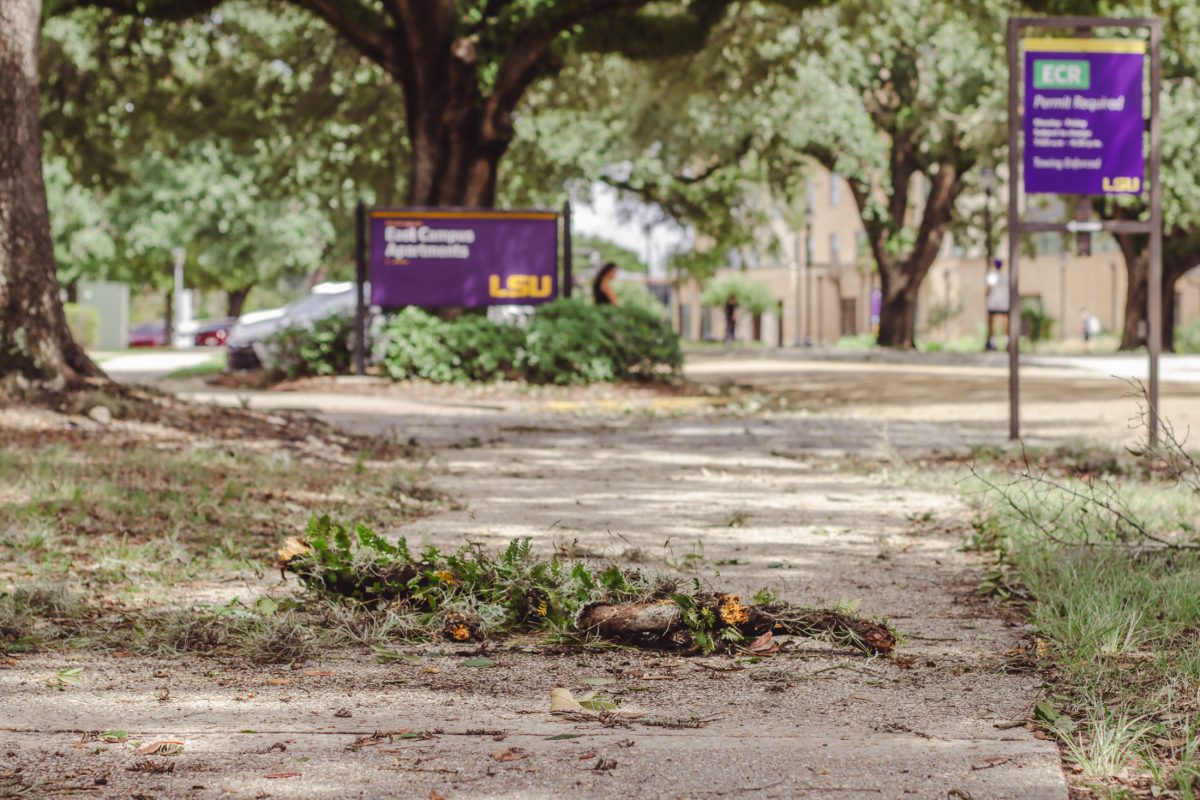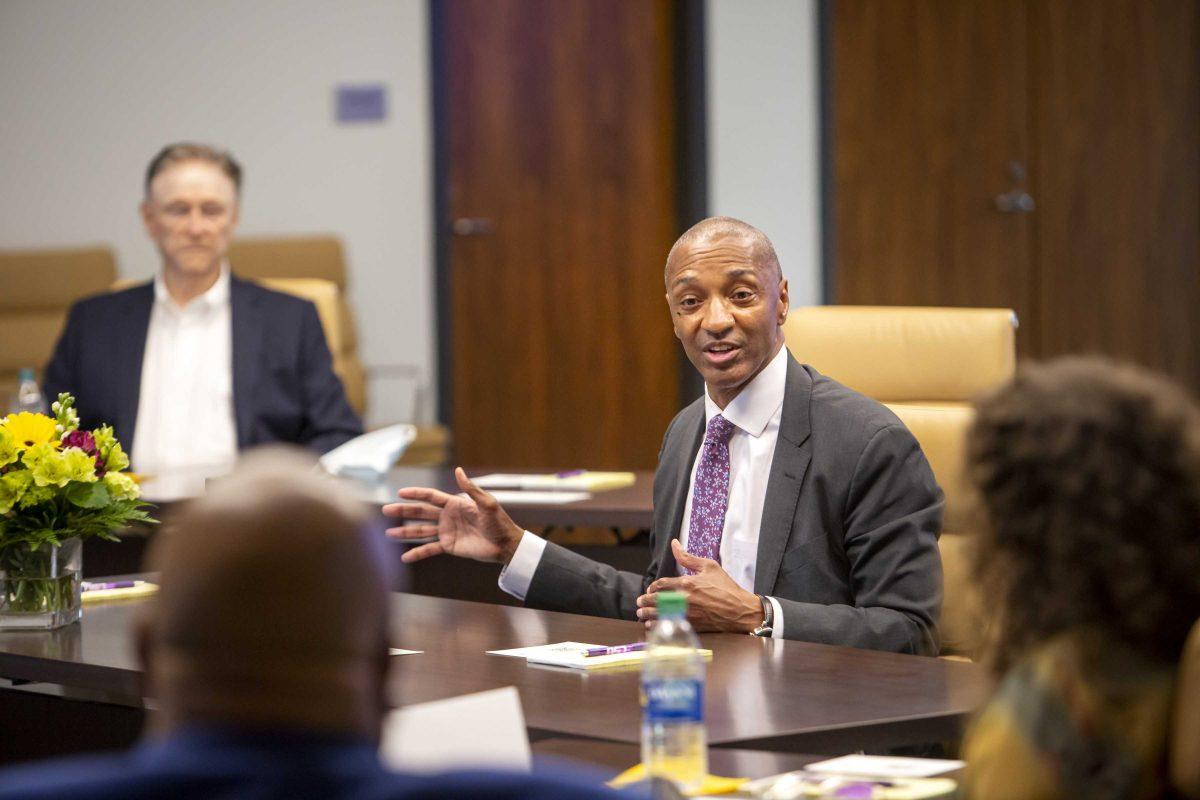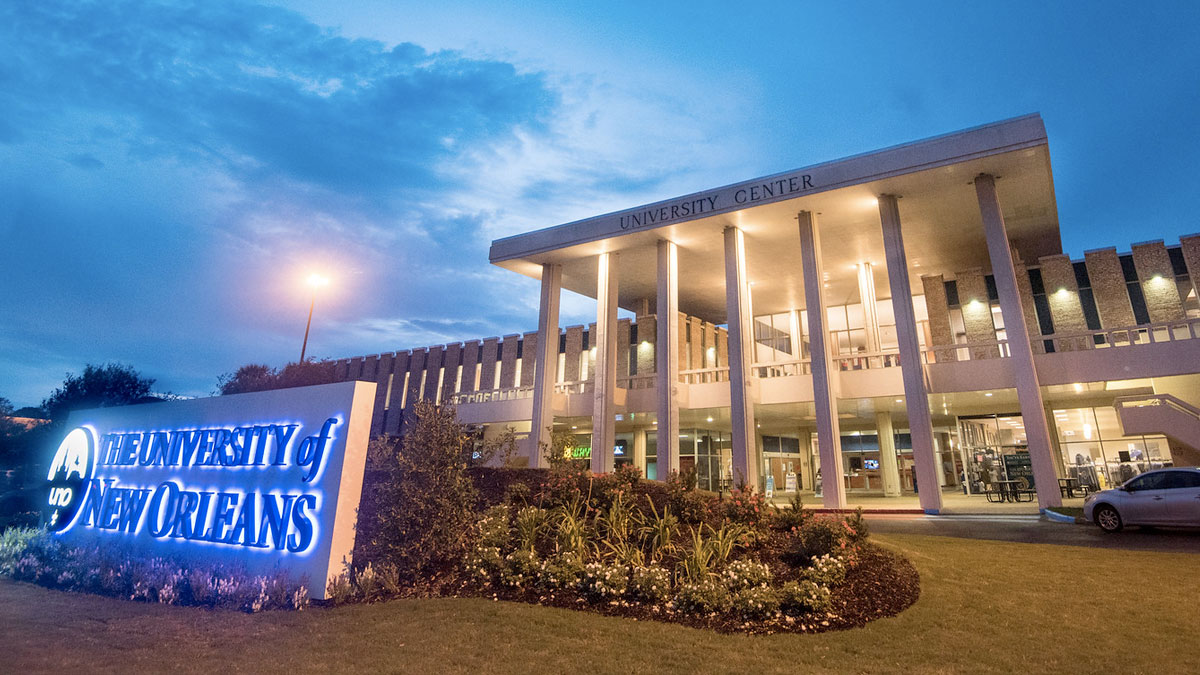Friday marks the one-month anniversary of Hurricane Francine making landfall, which left hundreds of thousands of Louisianians without power as the storm pushed through eastern Louisiana with 100- mile-per-hour winds, heavy rain and flash flooding.
Francine struck hard on Sept. 11, impacting New Orleans and Terrebonne, LaFourche and Jefferson parishes, but Baton Rouge seemed to escape the bulk of the storm. However, the city prepared for the worst in hopes for the best in recovery.
Anissa Hyde was displaced from her home of New Orleans following Hurricane Katrina. She and her family didn’t return to the city until five years later. Now an LSU graduate with bachelor’s and master’s degrees in environmental science, she’s back in her hometown working as a data analyst for a nonprofit.
Hyde noted the differences between New Orleans and Baton Rouge with disaster recovery, which are primarily due to geography. New Orleans has an average altitude of five feet below sea level, while some 80 miles away Baton Rouge sits at a more comfortable average of about 56 feet above sea level. Because of this, Hyde pointed out natural disasters like hurricanes affect each place in vastly different ways.
Resistance is when you have the ability not to be impacted by something at all, she said, but resilience is your ability to recover. Communities play a big part in that resilience.
“You see so many grassroots projects in the city of New Orleans and Baton Rouge that are definitely trying to empower locals on how to improve their resilience,” she said, going on to mention an example of one of these projects – the LaHouse Research and Education Center, a research-based facility located on LSU’s campus that displays building techniques and solutions for homes in the gulf region.
“So we can empower locals and tell community members how to protect themselves by doing things like cleaning storm drains, recycling their water and using rain gardens,” Hyde said.
An example of this community was the response to animal displacement during Hurricane Francine. Companion Animal Alliance is an open-intake shelter in Baton Rouge and is considered part of the disaster response team for the parish. CAA decided to foster out its animals in an effort to clear up some space in the shelter if new animals needed somewhere to land after the hurricane. CAA’s Communications and Events Senior Manager Heidi Wetherbee was floored by the response from the Baton Rouge community leading up to Hurricane Francine.
“In about three days, we ended up moving close to 260 animals into short-term foster care,” said Wetherbee.
“Our lobby was packed full of people, and it looked like absolute chaos,” she said, “but it’s one of the things I love the most about Louisiana – when people need help, they show up.”
During the historic flooding in South Louisiana in August 2016, Chris King was doing boat rescues and decided he wanted to do more to help. He formed a Facebook group called the “Cajun Army,” which he led in relief efforts that year.
“Our goal was to bring them [victims] hope, and just to love on people through the simplest act of helping them,” King said.
Since then, the Cajun Army has grown to just under 20,000 volunteers who do anything that’s needed – from gutting houses to feeding victims and offering supplies. The Cajun Army is entirely volunteer-based, with no monetary gain for anyone involved. King says the Cajun Army’s services change depending on the needs of the people and what volunteers are able to offer.
King recounted a memory helping an older man who lived in French Settlement whose trailer home was completely ruined. This man had no family, and the Cajun Army “just adopted him.” They rebuilt his home, fit with new furniture, appliances and cabinets. As he spoke, King’s gaze drifted off to a bird feeder built by the man, who the Cajun Army called “Papaw.”
King is the CEO of Next Level Solutions, a Baton Rouge-based company that supports small businesses. He is a worship leader and is actively involved in prison ministry at Louisiana State Penitentiary, specifically with prisoners on death row. He is a musician and the father of two daughters.
“I mean, I’ve got plenty of stuff to do,” King said with a laugh. “I just do this in my free time.”
Hyde encourages people to look up how their local communities are building resilience, including through education seminars, workshops and volunteer events. She says these can provide a more hopeful tone around a serious topic.
“There’s community level planning for climate resilience, there’s city-wide planning for climate resilience, there’s parish-wide, there’s state-wide and there’s federal-wide,” Hyde said. “And so actually, every level right now, as we speak, are thinking about resilience, and it’s a really cool thing to see.”









